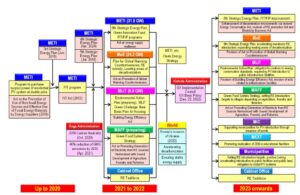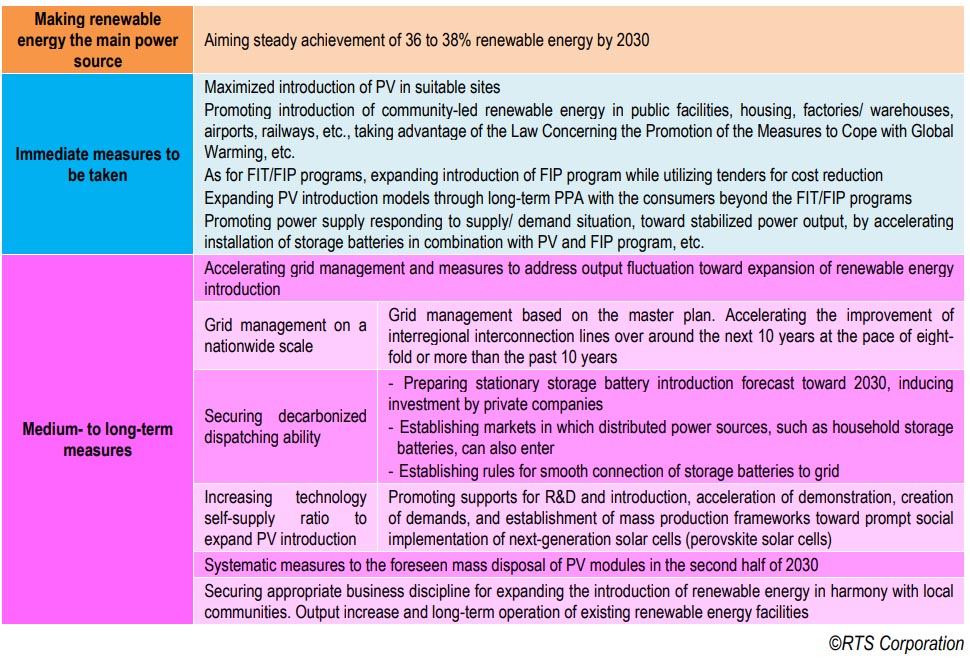The year 2023 has begun. After 50 years of development of energies alternative to oil, which began following the first oil crisis in 1973, the global cumulative PV installed capacity exceeded 1 TW, and the annual installed capacity entered an era of 200 GW. In the 2010s, PV power generation established economic and environmental benefits, and in 2022, upon Russia’s invasion of Ukraine, energy security measures also started to take place. The global PV market has started to move toward “growth and acceleration”, PV installation policies of the major countries have started to move toward “drastic enhancement”, and the PV industry has started to move toward “active investment in GW-scale production facilities” and “supply chain reviews”.
In the USA, plans to construct solar cell factories are being announced one after another based on the Inflation Reduction Act (IRA). In Europe, the Green Deal Industrial Plan was announced to reinforce the foundation of clean energy industries including the PV industry, as well as accelerating the transition to clean energy, based on REPowerEU.
On the other hand, as shown in Figure 1, Japan has moved from the FIT Actbased policies focusing on expansion of the installed capacity, deployed in the 2010s, to a new stage to simultaneously deploy the policies to integrate with the power market and to reduce greenhouse gas (GHG) emissions by 46% in the 2020s. Capabilities to strengthen deployment have increased through the administrative links among the ministries, by the expansion of the ministries taking policy measures, joined by the Ministry of the Environment (MoE), the Ministry of Land, Infrastructure, Transport and Tourism (MLIT), and the Ministry of Agriculture, Forestry and Fisheries (MAFF) in addition to the Ministry of Economy, Trade and Industry (METI). Furthermore, from 2023 onward, participation of the public administration is broadening, such as the Ministry of Internal Affairs and Communications (MIC) supporting introduction through bond issuance, the Ministry of Education, Culture, Sports, Science and Technology (MEXT) promoting realization of ZEB in educational facilities such as schools, and municipalities introducing PV based on the Act on Promotion of Global Warming Countermeasures, hence it is expected that introduction through the relevant ministries and municipalities will accelerate by mobilizing all the policy measures.
As shown in Table 1, METI clarified the position of PV on a short-term basis and medium- to long-term basis under the Basic Policy for the Realization of GX and will improve the business environment toward the “maximum introduction of domestically produced renewable energy” through reviewing and changing the existing schemes, regulations, and rules, while striving for “establishing the next-generation network”, “securing the dispatching ability”, and “accelerating innovation”.
Meanwhile, power consumers such as the public and companies are more motivated than ever to introduce PV in the context of the rising electricity bills and resilience of power, and furthermore to enhance the decarbonization measures. With the arrival of a great opportunity in the PV industry, the year 2023 must be made to become a turning point to start a new growth together with the power consumers. The PV industry may be able to change the game by lowering the barrier of PV introduction to power consumers by purveying the new advantages of PV power, such as switching from the conventional fixedprice purchase, which increases the public burden, by adopting power purchase agreement (PPA) to change the basis from Yen/kW to Yen/kWh and to disengage the power consumers from procurement of the installation cost and liberating power consumers from the risks of increase in electricity bills by changing the PV power bills from FIT to fixed unit price. It is becoming more and more important for the PV industry to deploy businesses to raise social acceptance by making efforts such as those as given above and by coexisting with the local communities.


